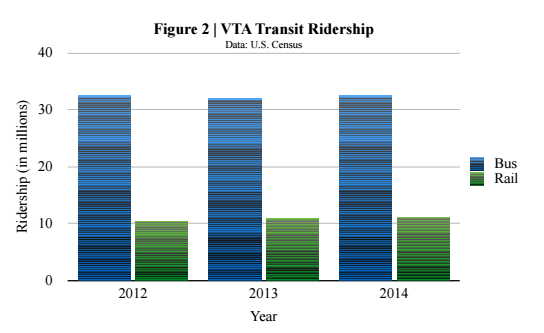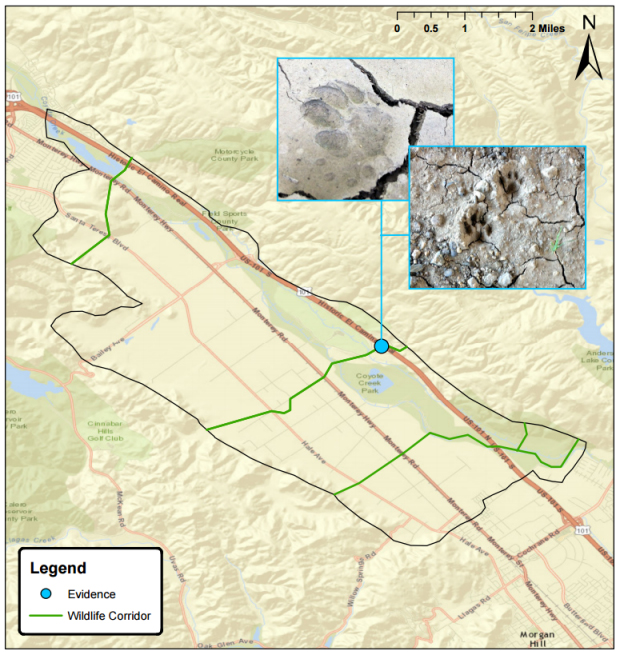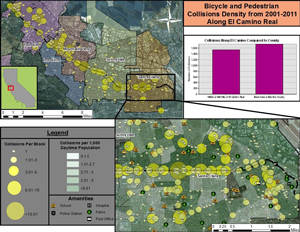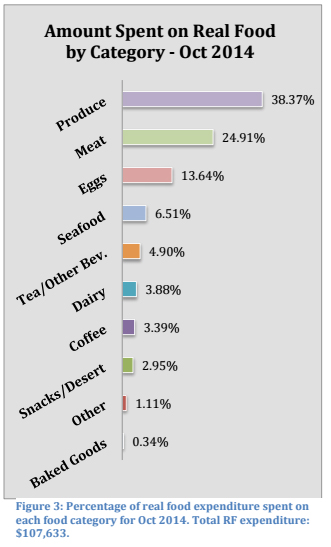
Capstone Projects 2015
Exploring Equitable and Sustainable Transportation Options for the 2016 Ballot Measure
Client: TransForm
Team: Harrison Price, Ian Earley, Genevieve Magnan, Gabriel Arámbula

It is likely that in 2016, VTA will propose a ballot initiative to pass a sales tax that funds public transportation (about $3.8 billion). This team conducted a study for TransForm, an urban environmental policy organization, on other cities that have successfully invested in transportation. Their work examined bike and pedestrian infrastructure programs, public transportation programs, affordability programs and sponsorships, and programs that promote the sharing economy.
Understanding Consumer Barriers to Farmers’ Markets: A Partnership with the Pacific Coast Farmers’ Market Association
Client: Pacific Coast Farmers’ Market Association
Team: Muriel Kenniston, Hannah Maryanski, Matteo Rodriquez, Kelly Ryan, Ellen Yun
The goal of this team’s research was to understand Santa Clara County consumer grocery shopping habits and barriers to farmers’ market access. To this end, the students conducted surveys examining shopping patterns of grocery store shoppers and farmers’ market shoppers and analyzed their results.
Analyzing Solutions for Unsafe Pharmaceutical Disposal
Client: Recycling and Waste Reduction Division, Santa Clara County
Team: Olivia Chambliss, Keely Graskamp, Allison McNamara, Mallory Miller
The goal of this team’s research was to understand Santa Clara County consumer grocery shopping habits and barriers to farmers’ market access. To this end, the students conducted surveys examining shopping patterns of grocery store shoppers and farmers’ market shoppers and analyzed their results.
Barriers to Cross: Wildlife Corridor and Policy Analysis in Coyote Valley
Client: Santa Clara County Open Space Authority
Team: Kate Cooper, Dana Kilsby, Elizabeth Malin, Emily Rudder

Coyote Valley is located between the Santa Cruz Mountains and the Diablo mountain range in San Jose. This region is home to many animal species including coyotes, bobcats, and mountain lions but is currently under pressure from development. Through both spatial analysis and groundtruthing, this team identified potential wildlife corridors and policies that would help protect wildlife.
Open Streets Comparative Analysis
Client: Silicon Valley Bicycle coalition
Team: Victoria Adetuyi, Tyler Brown, Anthony Carnesecca, Morgan Cowick, Savannah Hall
Reflecting programs all over the world, the City of San Jose is implementing an open streets pilot program next October, 2015. This pilot will close 7 miles of city streets to street traffic, opening up the city to bikes, walkers and runners. This team created recommendations for a post-event evaluation based on four categories: economic, environmental, health, and social.
Research for the Garden to Table Healthy Cornerstore Program
Client: Garden2Table
Team: Amanda Bostwick, Anna Prestbo, Lisa McMonagle
AB 1990, a new California assembly bill law, allows urban residents to sell their produce and market it directly to the public. Garden2table is working with local corner stores to make this produce available to the public through their Healthy Corner Store Program. This team implemented a questionnaire to gauge public interest in participating in this program, as well as used comparative case-studies to examine similar programs in other cities. They also created a fruit tree care brochure as an incentive for program participants.
Assessing the Walkability of El Camino Real in Santa Clara County
Client: Greenbelt Alliance
Team: Jennifer Laws, Alec Ratto, Lawrence Tse, and Frank Viviano

El Camino Real is a hotspot for motor vehicle collisions with both pedestrians and bicyclists. This team examined walkability issue along this corridor, mapping collision hotspots and linking them to a lack of important pedestrian and bicycle safety features, such as timed crosswalks and designated bicycle lanes. This team recommended several safety measures including: designated greened bicycle lanes, physical barriers separating motor vehicles from pedestrians and bicyclists, a speed limit reduction for motor vehicles, and the narrowing of car lanes along El Camino Real.
Fats, Oils, and Grease Control Options for the San José Environmental Services Department
Client: Environmental Services, City of San Jose
Team: Ian McCluskey, Andrew Quesada, Julia Peters
Restaurant fats, oil and grease (FOG) impede processes in waste water treatment plants. This team evaluated the current City of San Jose FOG control program and identified two alternative program formats that would have examined alternative programming having the highest chance of meeting the compliance and costs goals, namely a “Preferred Haulers” strategy based on best management practices, data collection and incentives for FSEs, and an exclusive franchise strategy modeled after solid waste collection.
Improving Energy Efficiency in San Jose K-12 School Districts
Client: Environmental Services, City of San Jose
Team: Matthew Burke, Manpreet Kaur and Uyen Mai
Proposition 39 provides funding for schools to implement energy efficiency measures and facilities upgrades, yet many schools are not aware that this funding is available. This team surveyed school administrators to identify the key barriers districts face in accessing Proposition 39 funds and propose¬¬d recommendations to assist districts in successfully implementing energy efficiency measures.
Connecting Local Agriculture with Local Consumers
Client: Santa Clara County Food Systems Alliance
Team: Margaret Roe, Drake Swezey, Nick Seabright
Santa Clara County's farmland has declined by forty-five percent in the past twenty years and fifty-five percent of its remaining farmland is at risk over the next thirty years. This team project examined what local policies that encourage agricultural preservation and viability and policies that link local consumers to local producers.
“Real Food” at Santa Clara University
Client: Center for Sustainability, Santa Clara University
Team: Sara Loewel, Rawley Loken, Tony Ferrari

Santa Clara University’s 2015 Climate Action Plan contains numerous provisions to help the school reach its sustainability goals, and among these is an improvement upon dining services’ food purchasing principle. This team investigated the quantity of “Real Food” purchased by Santa Clara University, highlighting the areas where our campus food system was the most/least sustainable and examining which kinds of foods the university should focus on purchasing more sustainably in order to meet its target.